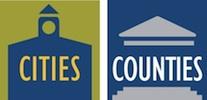Trail Plan
For many communities, a multi-use trail system functions as a recreational amenity that services a wide range of users. Multi-use, regional trails not only provide recreational experiences and places to be physically active, but they also serve as important transportation linkages. Trail systems may also benefit a community by providing buffers to adjoining land uses and adding to the local economy by attracting tourists from outside of the region.
A Trail Plan should help identify the general location of trail corridors, agencies that will be involved in developing and administering the trails, potential trail funding sources, trail layout and design, and trail use.
The following are recommendations from American Trails, and online trails resrouce, for the initial stages of trail planning:
- Trails and staging areas need to be easily accessible to the public in order for the trails to receive high use.
- Trail systems should connect existing open space areas and community recreational amenities, residential areas, schools, community centers, employment centers, social services and retail areas.
- The plan should provide a regional approach with neighboring community linkages, if possible, in order to provide connectivity to adjoining communities and provide these communities with guidance in their trail planning process.
- Trail design should be incorporated into plans for natural drainage channels, street rights-of-way, and landscape corridors, power right-of-ways, levees, and other open spaces.
- A recreation needs analysis (a survey of local attitudes and opinions toward leisure activities) should be conducted in order to determine the recreational preferences and the transportation needs of the area.
- Trail plans should list priorities for developing new trails and take into consideration previously constructed trails and regionally planned trails.
- Trails that are accessible to the disabled or are at least barrier-free should be clearly designated on maps and with signs.
- Trail plans should be incorporated into plans for new transportation structures such as roads, bridges, and overpasses.
- When possible, trail systems should offer loops, allowing the individual to avoid backtracking.
- Trail design should consider aesthetic, educational, scientific, historical, scenic and cultural features of interest.
|
Ideas/Roles: |
|
School members, local government officials and the community at large can collaborate on a trail plan to create a sense of ownership and achieve a vision that benifits and supports the community and schools together. |
| Examples: |
|
The Bay Trail Plan proposes development of a regional hiking and bicycling trail around the perimeter of San Francisco and San Pablo Bays. The plan was prepared by the Association of Bay Area Governments pursuant to Senate Bill 100, which mandated that the Bay Trail provide connections to existing park and recreation facilities, create links to existing and proposed transportation facilities, and be planned in such a way as to avoid adverse effects on environmentally sensitive areas. |
|
The Sacramento River Trail is a recreational amenity that connects to a multi-modal transportation system. Once completed, the river trail system will provide 20 miles of public access to the Sacramento River between Shasta Dam and downtown Redding. Based on a partnership between the City of Redding, U.S Bureau of Reclamation, U.S. Bureau of Land Management, and Shasta County, this trail system is an example of what is possible through a joint effort between various agencies and local groups. |





